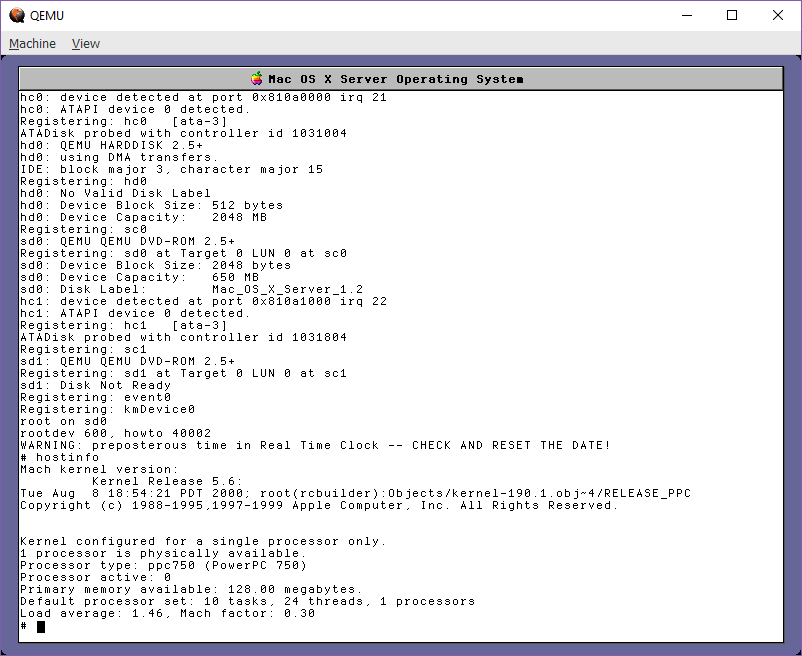Active oldest votes. Up vote 1 down vote. The machine type (or device model) is a list of low-level devices that should be emulated by default, like a chipset, PCI controller, storage controller, etc. QEMU creates a number of devices by default, depending on the machine: type.-device DEVNAME. And global DEVNAME. Suppress default devices for: some DEVNAMEs: default device suppressing DEVNAMEs: CD-ROM ide-cd, ide-drive, ide-hd, scsi-cd, scsi-hd: isa-fdc's driveA floppy, isa-fdc: parallel isa-parallel.
KVM (for Kernel-based Virtual Machine) is a full virtualization solution for Linux on x86 hardware containing virtualization extensions (Intel VT or AMD-V). It consists of a loadable kernel module, kvm.ko, that provides the core virtualization infrastructure and a processor specific module, kvm-intel.ko or kvm-amd.ko.


QEMU can optionally use an in-kernel accelerator, like kvm. The accelerators execute most of the guest code natively, while continuing to emulate the rest of the machine. Various hardware devices can be emulated and in some cases, host devices (e.g. Serial and parallel ports, USB, drives) can be used transparently by the guest Operating System. QEMU Machine Type Q35 + OVMF - does not recognize CDROM drives Context Lately, I've been trying to get a Windows virtual machine up and running with a passed-through graphics card and hardware virtualization so I can play games without needing to reboot my computer. Active oldest votes. Up vote 1 down vote. The machine type (or device model) is a list of low-level devices that should be emulated by default, like a chipset, PCI controller, storage controller, etc.
Using KVM, one can run multiple virtual machines running unmodified Linux or Windows images. Each virtual machine has private virtualized hardware: a network card, disk, graphics adapter, etc.
KVM is open source software. The kernel component of KVM is included in mainline Linux, as of 2.6.20. The userspace component of KVM is included in mainline QEMU, as of 1.3.
Blogs from people active in KVM-related virtualization development are syndicated at http://planet.virt-tools.org/
The KVM project celebrates 10 years!
See the announcement at this link, and this LWN.net article for some history of the project.
Kvm And Qemu
I am trying to run a basic virtual Ubuntu on an ARM machine.

My QEMU command looks something like this:
However, I am getting an error:
Now, I have listed the supported machine types for aarch64 and looked them up here:
Why is virt-2.6 failing? I have successfully used arm-generic-fdt and supplied a device tree to test my Zynq.
1 Answer
Your problem is that your command line is specifying the machine type twice:'-machine virt-2.6' says 'set the machine type to 'virt-2.6', but '-machine type=virtual' says 'set the machine type to 'virtual'.
QEMU is complaining because it uses the last machine type you give on the command line, which in this case is 'virtual', and that doesn't exist.
Unfortunately a bug in our error message printing means that the error message displays the first machine type if you passed the argument more than once, which is exceedingly misleading.
What we ought to do is forbid setting the machine type more than once, but QEMU's argument parsing code is extremely baroque and that's quite possibly hard to fix...
When you fix that part of your command line you will find that the next problem is that you've tried to pass a .iso file to -kernel. That won't work (it doesn't work on x86 QEMU either -- -kernel wants a kernel file). You can either (a) use -kernel/-initrd to pass a kernel and initrd, which are booted and then can read the disk image; or (b) use -bios to pass a UEFI image which is capable of reading a kernel out of a disk image.
My overall advice is that you should find and follow a good tutorial, because you're unlikely to get something working by trial and error -- a command line for a working QEMU 'virt' setup with networking and a hard disk can get pretty complicated.